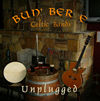
Longing for the day ...
Why is my music so small when music is so big to me?
|
Stay in touch!
Search with
Archives
November 2019
July 2019 June 2019 September 2018 August 2018 July 2018 May 2018 January 2018 December 2017 November 2017 October 2017 September 2017
Recent Entries
12 Good Bars and True - Rewrite and feedback
12 Good Bars and True - NSAI Feedback Red Hot - NSAI feedback Home Free - Be Free re-write - NSAI feedback Somebody Else's Skin - NSAI feedback Simplicity - NSAI feedback When It's Over - NSAI feedback She Don't Want Your Love - NSAI feedback Angels - NSAI feedback Baby I Need Your Soul - NSAI feedback |
October 1, 2013You need fans before you can ask for fan funding - Mouthzoff columnThis is my second column for Mouthzoff magazine. It was published in June. The topic is one that causes a lot of confusion among Indie - fan funding - because they can see it work for others and don't understand why their own efforts fail. Last edition I mentioned Amanda Palmer, the goddess of 21st century music business methods, who raised almost $1.2million in a single fan funding campaign. That's an all-time record for music and, yes, she has had a long career - backed in part by a major label - to build up that following. But fan funding is still an important part of any independent music career. Fan funding is quite simply asking your fan base to donate money or to buy a promise so you can raise capital to fund some activity. A new recording, marketing activities, a tour ... could be anything musicians do that their fans will appreciate. And you don't have to be a massive act like Amanda Palmer. For example, Brisbane Singer/songwriter Aislinn Sharp recently raised $1300 for her new single. Also, Brisbane's own international jazz supertars Trichotomy raised just over $5000 for packaging and marketing their new CD. Fan funding is talked about like a new thing, but it's really a return to the patronage model musicians used to support themselves before recording technology was invented. Composers like Bach and Beethoven were kept in employment by local nobles so the nobles could show off that "my pet musician is better than yours" to the neighbours. This patronage model went on for years and cemented the supposed superiority of "high" art over folk art. These days, if you want to funded by your patrons (AKA fans) you need to offer a little more than an ego boost to your patrons - and you need a lot more than one. For example, Amanda Palmer offered a range of things in return for a "donation" ranging from a free MP3 in exchange for $1 to a night at the donor's house painting them and singing for $10,000. That's one important point - you don't get something for nothing. Not even from your strongest fans. Plenty of websites offer fan funding services, and they vary in their terms and their methods. Kickstarter.com, the biggest, sets the standard - it was Amanda Palmer's choice. The deal there is that you set your offers and a target amount and the company keeps 5% of the amount given. If the goal is not met, you get nothing. For other companies, like Rockethub.com, you get the amount you raise whether you reach target or not. Sellaband.com offers a slightly different model, allowing fans to buy shares in the band rather than the stuff they offer. There are plenty of other variations. Remember, too, that you don't always have to ask for money. Cash donations are the most common form of fan support, but The Beastie Boys and The Shins, for example, have made video clips out of live footage sent to them by their fans. If you have a fan who's an accountant and who can save you time or money on doing your tax, having dinner with them and their friends every now and then is a small price to pay. The lesson? If you need something to help start a new initiative, fan funding can be a great way to support your plans. Figure out what you have to offer that costs you very little but which fans really value - like your time, or MP3s, or photos - and offer that to your fans in exchange for their support. Of course, to do this you need to build a fan base - but that's a topic for another column. Posted by DrHuge at October 1, 2013 10:55 AMComments
Leave a comment |
Categories
General
Life Media Music Music Career Diaries Politics Press Releases Quotes Songs Sport Thinking Tips for Indies Huge's music!
The Genre Benders: I am leaving! I am leaving! in original CD format or download from iTunes or listen on PayPlay.fm or 
Be a Genre Bender with this cool merchandise!  Bun' Ber E Unplugged in original CD format or download from MP3tunes.com or Go to Bun' Ber E's home page for more Bun' Ber E's debut CD
in original CD format or one track at a time or from or Read some reviews or Go to Bun' Ber E's home page for more |